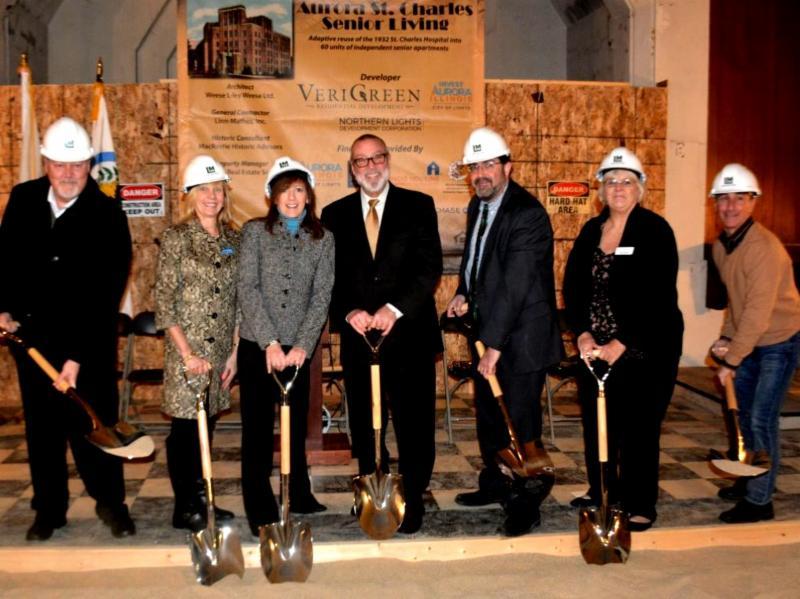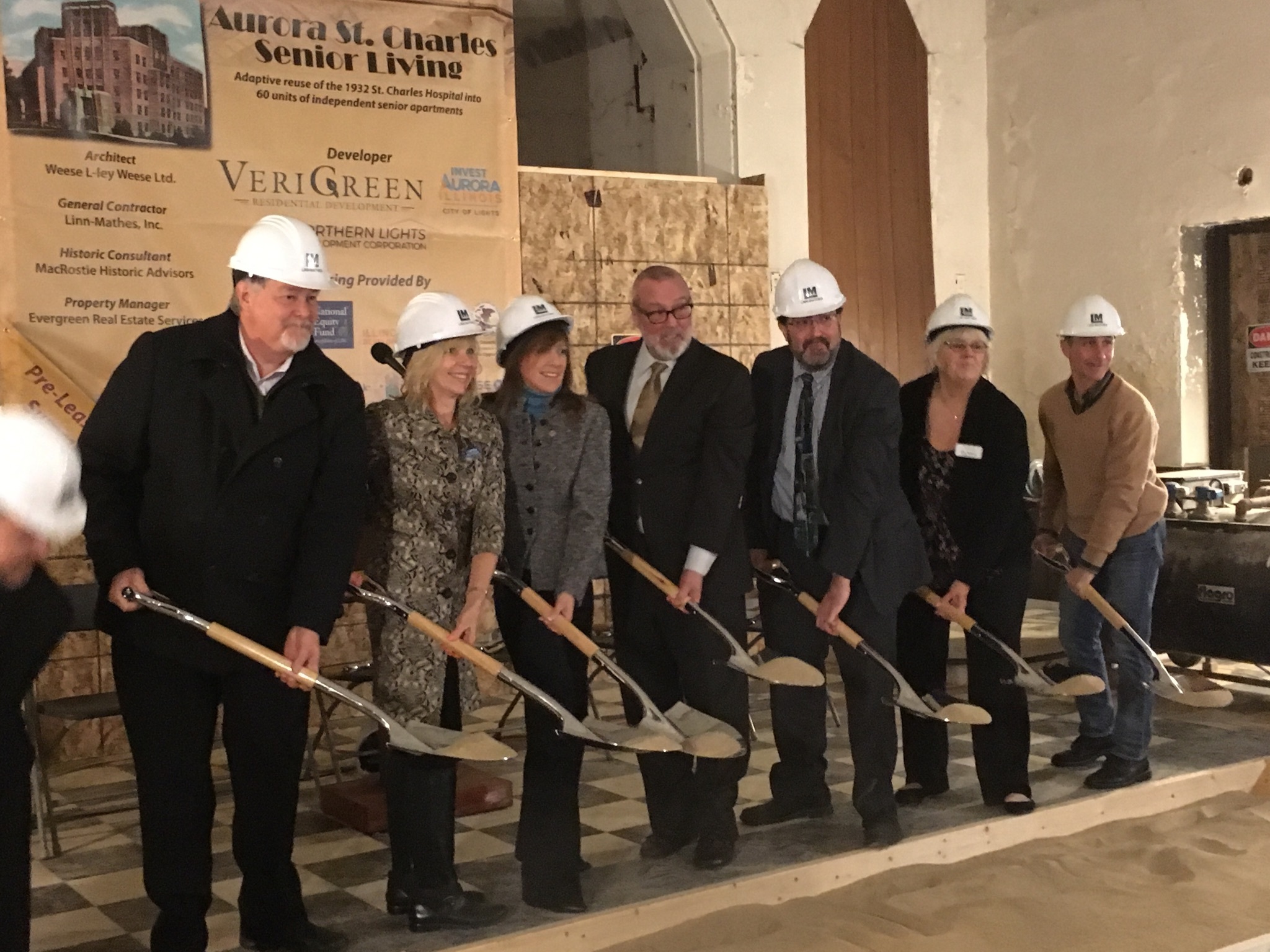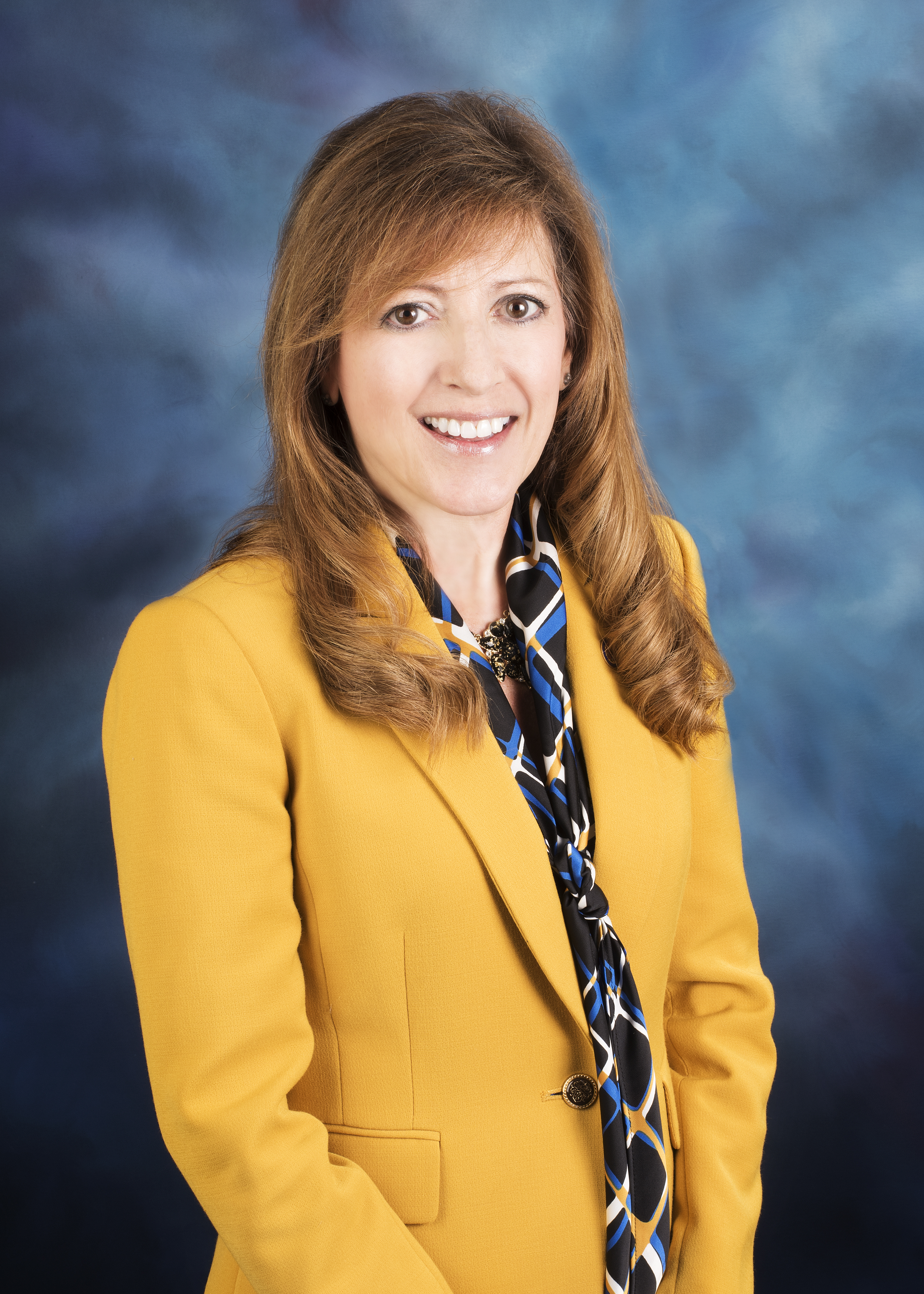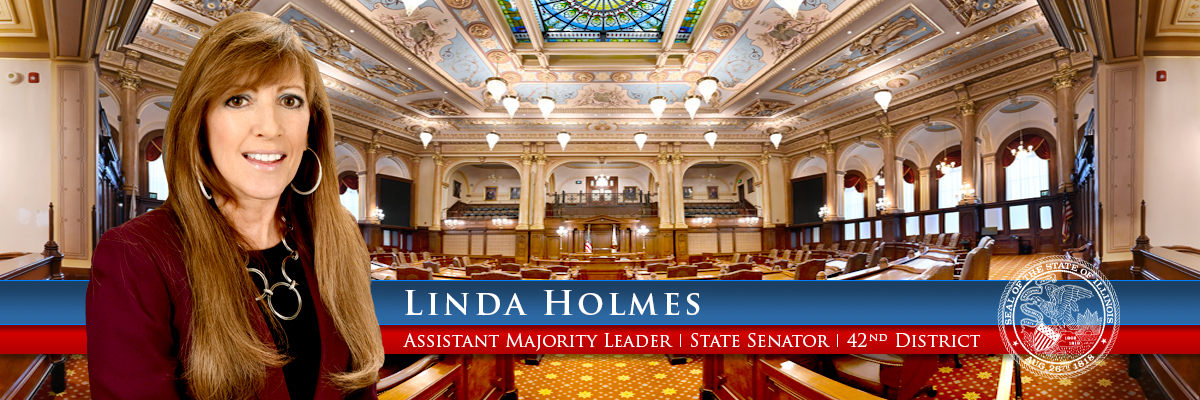- Details
- Category: Latest
 Aurora Beacon-News - Feb. 5, 2016 | Original article
Aurora Beacon-News - Feb. 5, 2016 | Original article
By Steve Lord
It was big news when developers broke ground on a $25 million renovation of the former St. Charles Hospital building in Aurora.
The project includes $18 million in private funding, but could not have been done without federal and state historic tax credits and loans from the Illinois Housing Development Authority, and the city of Aurora, using the city's authority provided by another federal program.
Aurora was one of the first cities to take advantage of the River Edge program, and was the first city to seek and receive an expansion of its original zone. It was that expansion that put the St. Charles property inside the zone.
But the project in Aurora came to pass in large part because a respected, experienced developer like VeriGreen was in charge, and was able to convince people to push deadlines to make the development happen, city officials said. The time frame was tight because the River Edge Redevelopment Zone program is set to expire at the end of 2016, and despite widespread support in the river towns that can benefit from it, and even bipartisan support in Springfield, the future of the program and the ability to do more projects like the St. Charles one is in doubt.
"Unfortunately, in this atmosphere, nothing's going anywhere," said state Sen. Linda Holmes, D-Aurora, who supported River Edge legislation the first time around and supports its reauthorization. "Even pieces of good legislation that would get bipartisan support are going nowhere."
- Details
- Category: Latest

Senator Holmes attended the groundbreaking of a long-in-development project now coming to fruition in Aurora Thursday.
The old Aurora St. Charles Hospital, built in 1932 and since added to the National Register of Historic Places, had fallen into disuse. With help from the RiverEdge Redevelopment Zone program, developer VeriGreen was able to secure the necessary funding to begin work on rehabilitating the building. When complete, it will feature 60 senior living units.
"The value of preserving this historic structure while also using it to care for our elderly is exactly the kind of development we're hoping out of the RiverEdge program, and the reason I urge an extension to it beyond this year," Holmes said. "This preserves the past while planning for the future in a way that's precisely in keeping with the story of this historic local gem."
The RiverEdge Redevelopment Zone program will sunset at the end of 2016 unless it is extended.
- Details
- Category: Latest
Automation World - Dec. 9, 2015 | Original article
By Aaron Hand
Asked recently how he can continue to develop beneficial programs while his dashboard lights up with the destructive dark side of crises, Chicago Mayor Rahm Emanuel insisted that any challenge must be seen as an opportunity to move forward. That was a few days before Thanksgiving, before he found himself under fire—people calling for his resignation because of the way the city and police department handled the police shooting of black teen Laquan McDonald a year ago.
Nonetheless, during his time as mayor, Emanuel has looked at the challenges facing his city and developed programs to turn those challenges around. One of those challenges was what he saw as an education system that was not preparing the workers of tomorrow for an ever-advancing manufacturing industry.
Emanuel is concerned that the U.S. as a country has not updated its education or infrastructure to adapt to a changing world. “Our educational system stops at 12th grade, and yet the jobs of tomorrow require a minimum of two years beyond,” he said during an event just before Thanksgiving called Bold Bets: Future of Manufacturing.
Emanuel is trying to create a city with the best-trained, best-educated workforce. Making reference to a federal system of job training programs that has not only been confusing but has led local systems to be similarly confusing, Emanuel said Chicago set out to systematically consolidate its programs—to “make it easy, make it simple, make it relevant.”
Chicago has seven community colleges—the second most in the country. Each school is focused on the most promising areas for jobs, Emanuel said, and they’ve asked the related industries to help design the curriculum to teach what they need.
A high school degree might’ve gotten you somewhere in your career 20 years ago, but that’s not the case today, Emanuel said. “It’s clear today that everybody is going to need two years of post-high school education.”
That’s what Chicago is trying to address with its Chicago Star Scholarship, which aims to ensure the city’s workforce has at least a 14th-grade education. “We will always go right if we invest in our people,” Emanuel said.
Through the Chicago Star Scholarship, which was launched a little over a year ago, City Colleges of Chicago provides tuition, fee and book waivers to qualifying high school graduates to help them get an associate degree with no out-of-pocket costs.
“You get a B average in Chicago public schools, and community college is free. Cost will not be a prohibitive factor,” Emanuel said. “We’re going to a pre-K to college model. If we can be a city where everybody has a minimum of 14th-grade level, Chicago will win. There’s no way China or India or Germany will beat us.”
Emanuel—who had just returned from a quick trip to Guangzhou, China, where he attended the annual forum U.S.-China Joint Commission on Commerce and Trade—had some insights into the challenge of losing jobs to developing nations like China.
“At one level China is a competitor, but there’s nothing that they’re doing that if we don’t do it right here, we can not only compete, but win,” Emanuel emphasized. “China won’t eat our lunch if we do our homework right. But if we don’t do our homework, there’s no guarantee.”
Chicago is working to get it right, developing programs to help fill the skills gap so often referenced in the manufacturing industry. Aurora University, for example, in the Chicago suburbs, created a science, technology, engineering and math (STEM) program to get kids interested at a younger age, noted Illinois state senator Linda Holmes, also during the Bold Bets event in Chicago.
Aurora University created a STEM partnership school—a “completely new concept,” Holmes said—to help bridge the obvious disconnect between students unable to find jobs and employers unable to find qualified workers. The John C. Dunham STEM Partnership School, located on the university’s campus, is for students in third through eighth grades. It develops not only the students, but also the teachers. The school is staffed through a professional development strategy that has teachers from the partner districts as faculty while they complete Aurora’s graduate coursework in math and science education.
“The school then pairs up with local businesses. The businesses not only help the school in the financial aspect, but also create the curriculum,” Holmes explained. “Now the students are actually learning the skills they need for jobs. I think it’s very promising.”
There are too many students finishing high school who are not properly prepared to start college, and that’s a problem Chicago and the country as a whole needs to acknowledge, said Jorge Ramirez, president of the Chicago Federation of Labor.
Ramirez described a Chicago-area high school program aimed at better preparing students for success in college and career opportunities. Created in a high school that had closed on Chicago’s west side, Austin Polytech Academy (APA) was founded by Chicago Public Schools and the Chicagoland Manufacturing Renaissance Council about eight years ago. The school works with Manufacturing Connect on engineering and machining courses to help students apply their skills to real-world work experiences with local manufacturers.
The students are getting their high school educations, but also NIMS certification, Ramirez pointed out. To top it off, the school is also in session at night to help train parents to better compete in the workforce as well. “This is working. The scalability is completely possible,” he said. “This is going to come down to political wherewithal.”
The discussion at the Bold Bets event also turned to the increasingly technical nature of manufacturing. The days of just making widgets are over, Emanuel said, and manufacturing has become not just a job, but a career. “We need to prepare the city to advance in advanced manufacturing.”
He pointed in particular to UI Labs, a research and commercialization collaborative that has set up its headquarters on Chicago’s Goose Island. “It makes Chicago the center of digital research,” Emanuel said. “It’s going to create a backbone of research.”
Manufacturing generates more data than any other sector of the economy, according to Bill King, Andersen chair in engineering at the University of Illinois Urbana-Champaign and co-director of the Illinois Advanced Manufacturing Institute. “When we talk to manufacturing leaders and ask them how much of their data they use, it’s very little of it—1 or 2 percent,” said King, who was also the founding CTO at UI Labs’ Digital Manufacturing and Design Innovation Institute (DMDII). “This is a huge opportunity for data as an asset.”
It also means that—despite the idea that robots are taking away U.S. manufacturing jobs—the workforce is as relevant as ever. “Manufacturing digitization makes knowledge workers more important,” King said. “It is a really exciting time to be a technology person. We know what it looks like when there’s a sector of the economy that becomes digitized. They’re very excited to bring new technologies and new business models to bear.”
- Details
- Category: Latest
 Kendall County NOW - Dec. 2, 2015 | Original article
Kendall County NOW - Dec. 2, 2015 | Original article
By Mark Fitton and Greg Bishop
===Excerpted===
SPRINGFIELD – A task force aimed at the Illinois local government glut began shaping its report to the governor and legislature two weeks ago as members approved nine proposals.
...
The task force, appointed by Republican Gov. Bruce Rauner and led by Lt. Gov. Evelyn Sanguinetti, includes state legislators, local government and education officials and others.
State Sen. Linda Holmes, D-Aurora, cast two “no” votes and two present votes on the last four items, which are the ones expected to draw the most scrutiny from legislative Democrats. Holmes’ district includes northeastern Kendall County, including portions of Oswego and Montgomery.
Holmes, the lone Democratic lawmaker voting in this task force session, said she thinks the group has “fostered a lot of good discussion, so I think that’s definitely a positive.”
Still, Holmes said, she’s not entirely comfortable with all the items on the group’s agenda.
“Let’s be completely blunt here,” she said. “I think in some cases, some of these items are bleeding over into this administration’s goal of eliminating the powers of organized labor.”
She said she wonders if those items involving collective bargaining are “more items on the governor’s turnaround agenda than … specific to the unfunded mandates and government consolidations committee.”
The group – formally the Local Government Consolidation and Unfunded Mandates Task Force – intends to finish its report in December.
For the full article, go to Kendall County NOW.
More Articles …
Page 14 of 25




